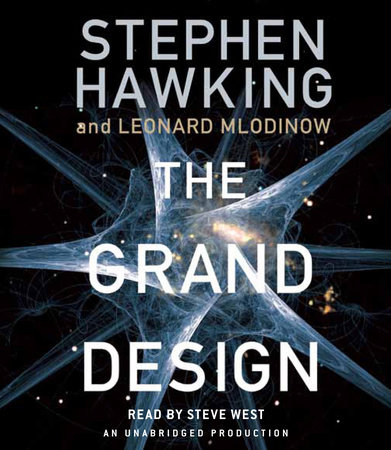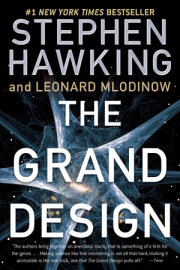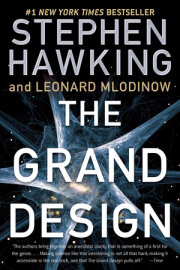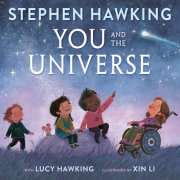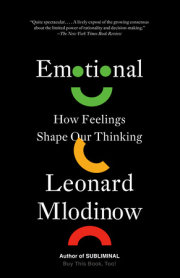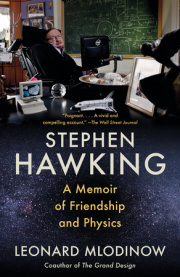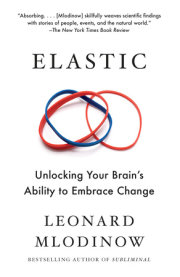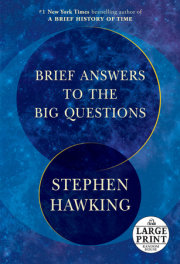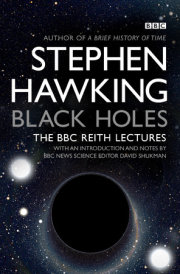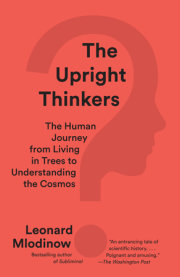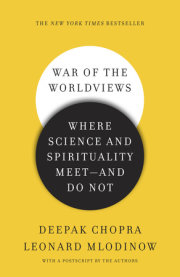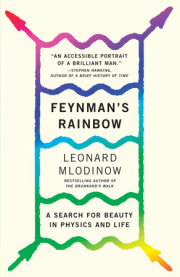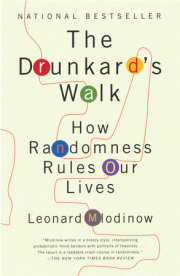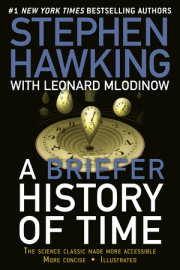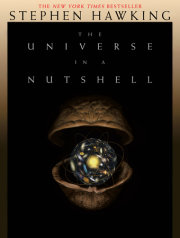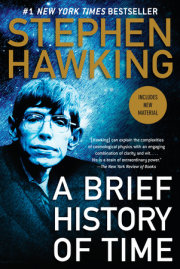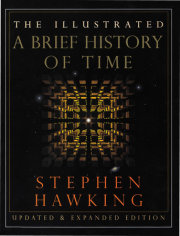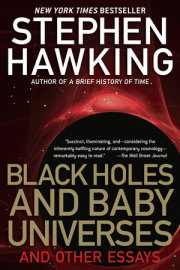Chapter 1
We each exist for but a short time, and in that time explore but a small part of the whole universe. But humans are a curious species. We wonder, we seek answers. Living in this vast world that is by turns kind and cruel, and gazing at the immense heavens above, people have always asked a multitude of questions: How can we understand the world in which we find ourselves? How does the universe behave? What is the nature of reality? Where did all this come from? Did the universe need a creator? Most of us do not spend most of our time worrying about these questions, but almost all of us worry about them some of the time.
Traditionally these are questions for philosophy, but philosophy is dead. Philosophy has not kept up with modern developments in science, particularly physics. Scientists have become the bearers of the torch of discovery in our quest for knowledge. The purpose of this book is to give the answers that are suggested by recent discoveries and theoretical advances. They lead us to a new picture of the universe and our place in it that is very different from the traditional one, and different even from the picture we might have painted just a decade or two ago. Still, the first sketches of the new concept can be traced back almost a century.
According to the traditional conception of the universe, objects move on well-defined paths and have definite histories. We can specify their precise position at each moment in time. Although that account is successful enough for everyday purposes, it was found in the 1920s that this "classical" picture could not account for the seemingly bizarre behavior observed on the atomic and subatomic scales of existence. Instead it was necessary to adopt a different framework, called quantum physics. Quantum theories have turned out to be remarkably accurate at predicting events on those scales, while also reproducing the predictions of the old classical theories when applied to the macroscopic world of daily life. But quantum and classical physics are based on very different conceptions of physical reality.
Quantum theories can be formulated in many different ways, but what is probably the most intuitive description was given by Richard (Dick) Feynman, a colorful character who worked at the California Institute of Technology and played the bongo drums at a strip joint down the road. According to Feynman, a system has not just one history but every possible history. As we seek our answers, we will explain Feynman's approach in detail, and employ it to explore the idea that the universe itself has no single history, nor even an independent existence. That seems like a radical idea, even to many physicists. Indeed, like many notions in today's science, it appears to violate common sense. But common sense is based upon everyday experience, not upon the universe as it is revealed through the marvels of technologies such as those that allow us to gaze deep into the atom or back to the early universe.
Until the advent of modern physics it was generally thought that all knowledge of the world could be obtained through direct observation, that things are what they seem, as perceived through our senses. But the spectacular success of modern physics, which is based upon concepts such as Feynman's that clash with everyday experience, has shown that that is not the case. The naive view of reality therefore is not compatible with modern physics. To deal with such paradoxes we shall adopt an approach that we call model-dependent realism. It is based on the idea that our brains interpret the input from our sensory organs by making a model of the world. When such a model is successful at explaining events, we tend to attribute to it, and to the elements and concepts that constitute it, the quality of reality or absolute truth. But there may be different ways in which one could model the same physical situation, with each employing different fundamental elements and concepts. If two such physical theories or models accurately predict the same events, one cannot be said to be more real than the other; rather, we are free to use whichever model is most convenient.
In the history of science we have discovered a sequence of better and better theories or models, from Plato to the classical theory of Newton to modern quantum theories. It is natural to ask: Will this sequence eventually reach an end point, an ultimate theory of the universe, that will include all forces and predict every observation we can make, or will we continue forever finding better theories, but never one that cannot be improved upon? We do not yet have a definitive answer to this question, but we now have a candidate for the ultimate theory of everything, if indeed one exists, called M- theory. M-theory is the only model that has all the properties we think the final theory ought to have, and it is the theory upon which much of our later discussion is based.
M-theory is not a theory in the usual sense. It is a whole family of different theories, each of which is a good description of observations only in some range of physical situations. It is a bit like a map. As is well known, one cannot show the whole of the earth's surface on a single map. The usual Mercator projection used for maps of the world makes areas appear larger and larger in the far north and south and doesn't cover the North and South Poles. To faithfully map the entire earth, one has to use a collection of
maps, each of which covers a limited region. The maps overlap each other, and where they do, they show the same landscape.
M-theory is similar. The different theories in the M-theory family may look very different, but they can all be regarded as aspects of the same underlying theory. They are versions of the theory that are applicable only in limited ranges-for example, when certain quantities such as energy are small. Like the overlapping maps in a Mercator projection, where the ranges of different versions overlap, they predict the same phenomena. But just as there is no flat map that is a good representation of the earth's entire surface, there is no single theory that is a good representation of observations in all situations.
We will describe how M-theory may offer answers to the question of creation. According to M-theory, ours is not the only universe. Instead, M-theory predicts that a great many universes were created out of nothing. Their creation does not require the intervention of some supernatural being or god. Rather, these multiple universes arise naturally from physical law. They are a prediction of science. Each universe has many possible histories and many possible states at later times, that is, at times like the present, long after their creation. Most of these states will be quite unlike the universe we observe and quite unsuitable for the existence of any form of life. Only a very few would allow creatures like us to exist. Thus our presence selects out from this vast array only those universes that are compatible with our existence. Although we are puny and insignificant on the scale of the cosmos, this makes us in a sense the lords of creation.
To understand the universe at the deepest level, we need to know not only how the universe behaves, but why.
Why is there something rather than nothing?
Why do we exist?
Why this particular set of laws and not some other?
This is the Ultimate Question of Life, the Universe, and Everything. We shall attempt to answer it in this book. Unlike the answer given in The Hitchhiker's Guide to the Galaxy, ours won't be simply "42."
2
The Rule of Law
Skoll the wolf who shall scare the Moon
Till he flies to the Wood-of-Woe:
Hati the wolf, Hridvitnir's kin,
Who shall pursue the sun.
-"Grimnismal," The Elder Edda
n Viking mythology, Skoll and Hati chase the sun and the moon. When the wolves catch either one, there is an eclipse. When this happens, the people on earth rush to rescue the sun or moon by making as much noise as they can in hopes of scaring off the wolves. There are similar myths in other cultures. But after a time people must have noticed that the sun and moon soon emerged from the eclipse regardless of whether they ran around screaming and banging on things. After a time they must also have noticed that the eclipses didn't just happen at random: They occurred in regular patterns that repeated themselves. These patterns were most obvious for eclipses of the moon and enabled the ancient Babylonians to predict lunar eclipses fairly accurately even though they didn't realize that they were caused by the earth blocking the light of the sun. Eclipses of the sun were more difficult to predict because they are visible only in a corridor on the earth about 30 miles wide. Still, once grasped, the patterns made it clear the eclipses were not dependent on the arbitrary whims of supernatural beings, but rather governed by laws.
Despite some early success predicting the motion of celestial bodies, most events in nature appeared to our ancestors to be impossible to predict. Volcanoes, earthquakes, storms, pestilences, and ingrown toenails all seemed to occur without obvious cause or pattern. In ancient times it was natural to ascribe the violent acts of nature to a pantheon of mischievous or malevolent deities. Calamities were often taken as a sign that we had somehow offended the gods. For example, in about 4800 bc the Mount Mazama volcano in Oregon erupted, raining rock and burning ash for years, and leading to the many years of rainfall that eventually filled the volcanic crater today called Crater Lake. The Klamath Indians of Oregon have a legend that faithfully matches every geologic detail of the event but adds a bit of drama by portraying a human as the cause of the catastrophe. The human capacity for guilt is such that people can always find ways to blame themselves. As the legend goes, Llao, the chief of the Below World, falls in love with the beautiful human daughter of a Klamath chief. She spurns him, and in revenge Llao tries to destroy the Klamath with fire. Luckily, according to the legend, Skell, the chief of the Above World, pities the humans and does battle with his underworld counterpart. Eventually Llao, injured, falls back inside Mount Mazama, leaving a huge hole, the crater that eventually filled with water.
Ignorance of nature's ways led people in ancient times to invent gods to lord it over every aspect of human life. There were gods of love and war; of the sun, earth, and sky; of the oceans and rivers; of rain and thunderstorms; even of earthquakes and volcanoes. When the gods were pleased, mankind was treated to good weather, peace, and freedom from natural disaster and disease. When they were displeased, there came drought, war, pestilence, and epidemics. Since the connection of cause and effect in nature was invisible to their eyes, these gods appeared inscrutable, and people at their mercy. But with Thales of Miletus (ca. 624 bc-
ca. 546 bc) about 2,600 years ago, that began to change. The idea arose that nature follows consistent principles that could be deciphered. And so began the long process of replacing the notion of the reign of gods with the concept of a universe that is governed by laws of nature, and created according to a blueprint we could someday learn to read.
Viewed on the timeline of human history, scientific inquiry is a very new endeavor. Our species, Homo sapiens, originated in sub-Saharan Africa around 200,000 bc. Written language dates back only to about 7000 bc, the product of societies centered around the cultivation of grain. (Some of the oldest written inscriptions concern the daily ration of beer allowed to each citizen.) The earliest written records from the great civilization of ancient Greece date back to the ninth century bc, but the height of that civilization, the "classical period," came several hundred years later, beginning a little before 500 bc. According to Aristotle (384 bc-322 bc), it was around that time that Thales first developed the idea that the world can be understood, that the complex happenings around us could be reduced to simpler principles and explained without resorting to mythical or theological explanations.
Thales is credited with the first prediction of a solar eclipse in 585 bc, though the great precision of his prediction was probably a lucky guess. He was a shadowy figure who left behind no writings of his own. His home was one of the intellectual centers in a region called Ionia, which was colonized by the Greeks and exerted an influence that eventually reached from Turkey as far west as Italy. Ionian science was an endeavor marked by a strong interest in uncovering fundamental laws to explain natural phenomena, a tremendous milestone in the history of human ideas. Their approach was rational and in many cases led to conclusions surprisingly similar to what our more sophisticated methods have led us to believe today. It represented a grand beginning. But over the centuries much of Ionian science would be forgotten-only to be rediscovered or reinvented, sometimes more than once.
According to legend, the first mathematical formulation of what we might today call a law of nature dates back to an Ionian named Pythagoras (ca. 580 bc-ca. 490 bc), famous for the theorem named after him: that the square of the hypotenuse (longest side) of a right triangle equals the sum of the squares of the other two sides. Pythagoras is said to have discovered the numerical relationship between the length of the strings used in musical instruments and the harmonic combinations of the sounds. In today's language we would describe that relationship by saying that the frequency-the number of vibrations per second-of a string vibrating under fixed tension is inversely proportional to the length of the string. From the practical point of view, this explains why shorter guitar strings produce a higher pitch than longer ones. Pythagoras probably did not really discover this-he also did not discover the theorem that bears his name- but there is evidence that some relation between string length and pitch was known in his day. If so, one could call that simple mathematical formula the first instance of what we now know as theoretical physics.
Copyright © 2010 by Stephen Hawking. All rights reserved. No part of this excerpt may be reproduced or reprinted without permission in writing from the publisher.

